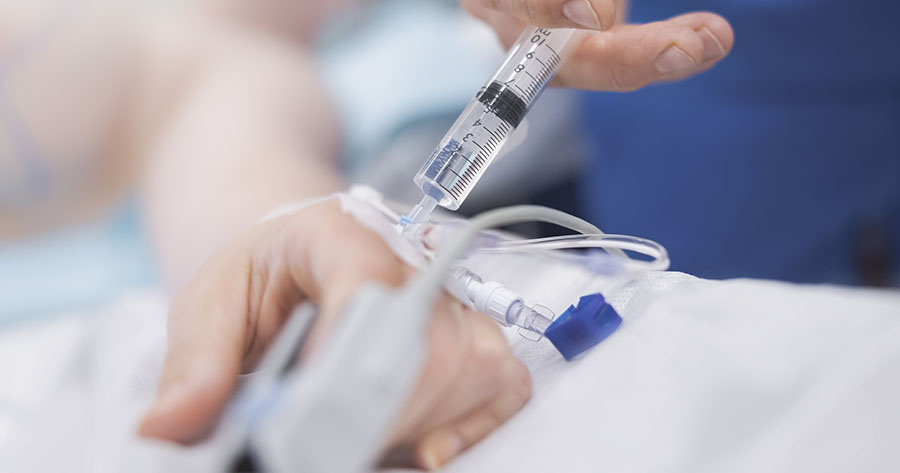Insulin pump therapy has gained widespread acceptance as an effective and safe means of insulin delivery in the UK over the last decade, but there is still a recognition that access to insulin pump therapy for people with type 1 diabetes lags behind most countries in Western Europe and North America. Results of a recent audit of insulin pump use in the UK, supported by the Association of British Clinical Diabetologist, Diabetes UK and JDRF, suggested that only 7% of people with type 1 diabetes in the UK were using an insulin pump, compared to 15% in Germany and Norway and approximately 40% in the US (see Box 1).
The first NICE technology appraisal of insulin pump therapy (NICE, 2003) recommended insulin pump therapy as an option for those with type 1 diabetes using an optimised multiple daily injection (MDI) regimen of insulin glargine (the only long-acting insulin analogue available in the UK at the time of the report) who could not achieve target HbA1c (58 mmol/mol [7.5%] or 48 mmol/mol [6.5%] with complications) because of disabling hypoglycaemia.
The economic evaluation had suggested this would mean up to 2% should have access to an insulin pump (NICE, 2003) and many commissioners used this as a cap on the number of pumps they would fund, if they adopted the technology appraisal at all. In an attempt to assist diabetes service providers in making pump therapy more widely available, the Department of Health (DH) and Diabetes UK set up an Insulin Pumps Working Group, which produced a report entitled Insulin Pump Services (DH and Diabetes UK, 2007). This detailed, amongst other things, a care pathway for the initiation of pump therapy, competencies for practitioners delivering a pump service and examples of good practice in setting up a service.
Second technology appraisal
This publication was followed by the second NICE technology appraisal (NICE, 2008), which recommended a broadening of the criteria by which people with type 1 diabetes should be judged to merit a trial of insulin pump therapy. Children aged 11 or under should be offered an insulin pump for intensive insulin therapy where an MDI regimen is felt to be inappropriate; children over age 11 and adults should be considered for an insulin pump if MDI therapy (including, if appropriate, the use of long-acting insulin analogues) has failed, as evidenced by the occurrence of disabling hypoglycaemia or by an HbA1c persistently greater than 69 mmol/mol (8.5%). In this context, the definition of disabling hypoglycaemia now included the fear of recurrent hypoglycaemia. The guideline suggested that approximately 33% of children under 11 years and 12% of older children and adults with type 1 diabetes would be likely to need insulin pump therapy.
Given that widespread access to insulin pump therapy for this number of people would require major expansion of pump services, the National Technology Adoption Centre (NTAC) developed a “How to, Why to” guide to setting up an insulin pump therapy service (NTAC, 2010). Despite this, there remained a perception that access to insulin pump therapy was limited and inequitable and that the number of insulin pump users was slow to grow. However, a survey by the Yorkshire and Humber Public Health Observatory (2010) did show progress, particularly in the number of new insulin pump starts over the previous 2 years and the expansion in paediatric insulin pump service provision; that said, only 50% of potential pump services responded to the survey.
Insulin pump therapy was identified as one of three specific areas for focus in the NHS plan in 2011. An Insulin Pump Stakeholder Group was established, which was led by NHS Diabetes (now part of NHS Quality Improvement), JDRF and Diabetes UK, and this comprised clinicians, representatives of the insulin pump manufacturers and patient groups. This group proposed two initiatives: a commissioned clinician-led audit of insulin pump services and the creation of an Insulin Pump Network.
Insulin Pump Network
The network was established by NHS Diabetes in February 2012 with the following objectives:
- To promote the greater uptake and appropriate use of insulin pumps in line with NICE guidance.
- To address the inequality in the access to and quality and provision of insulin pump services.
The network is open to any healthcare professional or organisation in England with an interest in the development or delivery of an insulin pump service for either paediatric or adult populations. To date, there are 529 members signed up to the network, with a preponderance of diabetologists, DSNs (both adult and paediatric), paediatricians and dietitians, but also a handful of others professionals including midwives, GPs, patient support group representatives and commissioners (see Figure 1).
Following a launch event at the Royal College of Physicians on 3 May 2012, a scoping report was produced and a project group established, led by Heather Stephens and with myself as the national clinical lead. The scoping report noted that 67% of paediatric services and 48% of adult services had experienced barriers to establishing pump therapy. It identified several barriers, including lack of funding for staffing a pump service and complexities of pump procurement. Encouragingly, although reported as having been an issue at the outset, few services were experiencing ongoing problems with funding for the pump itself.
The network project group produced a statement of aims to support the development of the network:
- To promote the appropriate use of insulin pump therapy and support the organisational and educational system for people with diabetes and staff required to embed this method of treatment.
- To bring together health communities to reduce variation of care and deliver better outcomes for people with diabetes using insulin pumps.
- To ensure an effective two-way sharing of the most up-to-date guidance, tools, best practice and resources.
- To ensure that those people who would benefit from this are able to access a high quality pump service.
A website was established to support the dissemination of information about insulin pump therapy and sharing of guidelines and other resources. The information was divided into subsections: data and information sources; commissioning resources; quality improvement resources; policy standards and guidance; competencies and training; and clinical protocols. Members were invited to submit documents they were willing to share, which were peer-reviewed by the project team. The website has also acted as a forum through which members can obtain views from other network members. Examples of such queries are:
- Flying with insulin pumps – prompting creation of a position statement based on information from pump manufacturers and the Civil Aviation Authority amongst others.
- Managing non-attenders at pump clinic – a topic which generated heated commentary on how best to tackle this problem group.
- Re-use of insulin pumps and trials of insulin pump therapy – this drew an unprecedented number of posts, sharing practice, uncovering significant divergence in approach and prompting calls for definitive guidance at regional meetings.
Following the re-organisation of the NHS in 2012, four regions were created – North, South, Midlands and East, and London. Over a 3-week period at the start of February 2013, four meetings of the network were held to represent each of these regions. The aim of these meetings was to promote the network and share experiences and issues with providing insulin pump therapy. Plenty of time was devoted to interaction between delegates to identify the challenges they were facing and develop plans for how to address these through the network.
Common themes from meetings
Capacity planning for insulin pump services
What should the staffing look like to initiate and support insulin pump therapy? It was suggested that the national service level audit should provide benchmarking information. Larger centres reported their experience with using virtual consultations to increase capacity for follow-up of pump users.
Funding the insulin pump service
How can we ensure adequate income is obtained to support the necessary staffing? There was a lot of discussion about developing a tariff for pump therapy and at the South region meeting, Nick Vaughan from Brighton, who has been leading on the development of tariffs for diabetes at the Department of Health, outlined the work he has done to obtain a specific treatment code (using the OPCS4 system) for insulin pump therapy, which should allow creation of a tariff that could be implemented by 2015.
Developing the staff to deliver insulin pump therapy services
How can we best access training for staff? It was recognised that there are a limited number of pump training courses for healthcare professionals and that there is a need to expand the opportunities, possibly through an e-learning package. In addition, training should be available for other healthcare professionals working in settings where they might encounter pump users, for example, the emergency department, labour ward and operating theatre.
Standardising pathways to pump therapy
What should the pump pathway look like for a new pump user prior to initiation of pump therapy and for the first year thereafter; and for ongoing support for pump users after the first year and when the time comes to change their pump? There was a lot of support for group education and updates for existing pump users in order to prevent user fatigue and maintain improvements in glycaemic control, and improve the efficiency of service delivery.
Developing outcome measures for the success of insulin pump therapy beyond HbA1c
What other benefits may pump users obtain from this therapy that can be effectively measured? There was significant demand for standardised measures of hypoglycaemia episodes and awareness and a quality of life questionnaire relevant to pump therapy.
Use of continuous glucose monitoring (CGM)
How should CGM be integrated into a pump service? There is a need to define which people with diabetes should be offered CGM and the outcome measures which would justify continued use, and funding of CGM.
Out-of-hours support for insulin pump users
Should there be 24/7 clinical support for insulin pump users? Most adult services were unable to provide this support, but there was a consensus that this would be ideal, with the pump companies providing technical support. The regional networks could act as a forum for developing a regional out-of-hours service, which might be extended to all people with type 1 diabetes, not just pump users.
Reference centres for pump therapy
Would there be benefit in having a few centres in each region to support smaller or recently created pump services? Whilst all regions agreed that it would be very valuable to have such centres of expertise to mentor other centres, there was a recognition that this could not happen if it represented a significant increase in unfunded work for the reference centre.
Transition pump services
What should these services look like? There was concern about how best to organise transition services in general and specifically for pump users. There are particular tensions in areas where there is a mismatch between a big paediatric pump service and a much smaller adult service and the service-level audit will help to flag these up.
Summary
These regional meetings have generated the momentum needed to promote the Insulin Pump Network and the network members have identified a major work stream that needs to be implemented. On 1 April 2013, NHS Improving Quality was established to bring together the wealth of knowledge, expertise and experience of a number of NHS improvement organisations and as a consequence, NHS Diabetes no longer exists. This reconfiguration of the NHS casts a shadow over the future of the network, but there is great enthusiasm for this initiative and optimism that funding will be found to maintain the important work of the network.





The risk factors and what might be done to address them.
24 Mar 2025